By Elaine Buxton
Introduction
The federal US Bureau of Reclamation and California state water agencies blames the low water level at Lake Mead on climate change and 22 years of drought, the worst we have experienced in the US for 1200 years. This is a gross over simplification and lack of full disclosure about water resources as the following evidence clearly demonstrates. It does not sufficiently justify water controllers’ restrictions this year. How water is developed, stored, managed and used in the support of urban populations, industry, agriculture and the environment more fully explain reservoir levels and the current situation we are facing regarding water supply.
Hoover Dam at Lake Mead, owned by the US Bureau of Reclamation, was completed in 1936. With a full lake capacity potential of 7.5 MAF, in mid July of 2022, its water level dropped to its lowest point, at 27 percent capacity, since 1937 while still being filled for the first time. Its highest point was reached after wet years in 1983. Lake Mead is the largest reservoir in the United States and provides water to 20 million people in 3 southwestern states (CA, AZ, NV), tribal lands and Mexico and supports extensive agriculture in naturally semi-arid climates interrupted by periodic monsoon type rain.
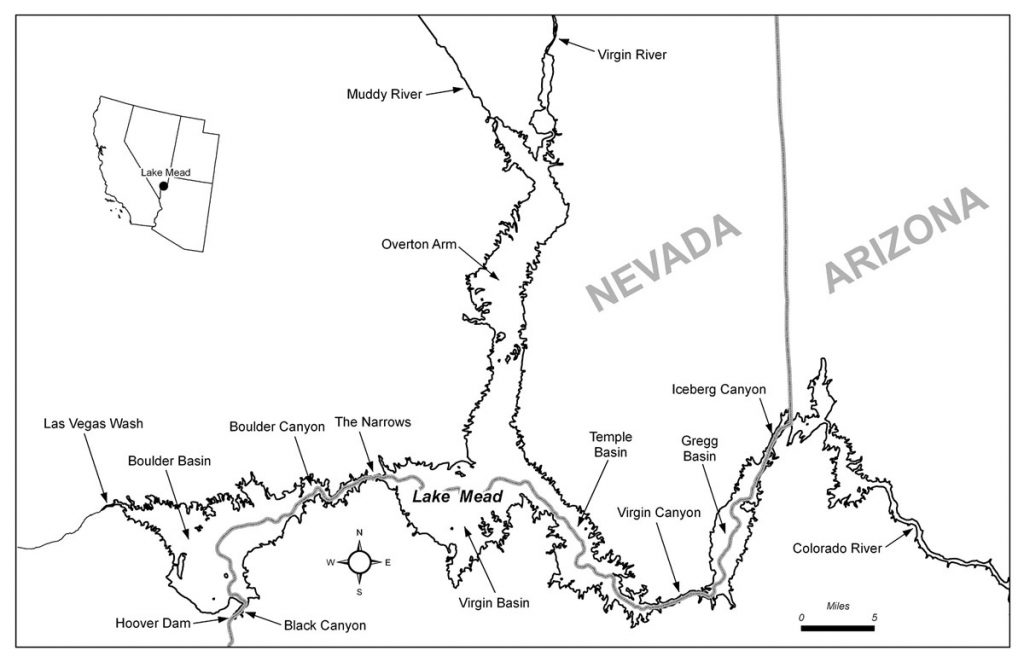
Lake Mead has four main sources of water: The Colorado River from the east, the Virgin and Muddy Rivers from the northern parts of Nevada, the Las Vegas Lake and Wash in SE Nevada, and 10 percent from local precipitation and groundwater. Glen Canyon Dam at Lake Powell, about 193 miles upstream from Lake Mead, regulates the amount of Colorado River water delivered from the Upper Colorado Basin states to the lower basin states. This demonstrates how management of rivers, watersheds and basins requires regional and interstate cooperation.
Lake Mead Annual Water Allocations and Conservation
The Colorado River Compact of 1922 estimated that 15 to 20 MAF per year could be allocated to the states, tribes and Mexico, but the actual amount of water available has often been less than 13 MAF in drought years. Thus, the chronic over-allocation of water from Lake Mead has gradually dropped the storage amount remaining. In “normal” precipitation years, Lake Mead declines twelve feet in elevation, known as the structural deficit.
At least since 2007, water managers in the 7 states and Mexico began planning for water shortages with the Colorado River Interim Guidelines on sharing and saving water. A program known as Intentionally Created Surplus (ICS) was created, allowing the lower basin states and Mexico to obtain credits for stored water in Lake Mead through investments in conservation, including fallowing of farmland, modernization of irrigation methods, desalination for water reuse and using a non-Colorado River source of water. The banked credits and storage of excess water could be used in the future and had monetary value. ICS was extended later in the Drought Contingency Plan. The guidelines became a game changer, as allocations taken by wholesalers and exporters beyond what was delivered to consumers was stored in secondary reservoirs and in underground aquifers for use in the future.
In 2019, a Drought Contingency Plan (DCP) was agreed to by AZ, CA, NV, and Mexico with the USBR, in effect until 2026. This plan is currently being carried out, which established water levels in Lake Mead that trigger specific water curtailments. It is important to recognize that the DCP bases its allocation reductions only on the water level tiers of Lake Mead, regardless of higher levels in other reservoirs. Water managers have seen the water issues coming for decades and have invested in diverse infrastructures and technical improvements for water resiliency. In August 2022, USBR projected that Lake Mead levels will fall below 1,030 feet within 24 months.
Alternative Sources of Water in California
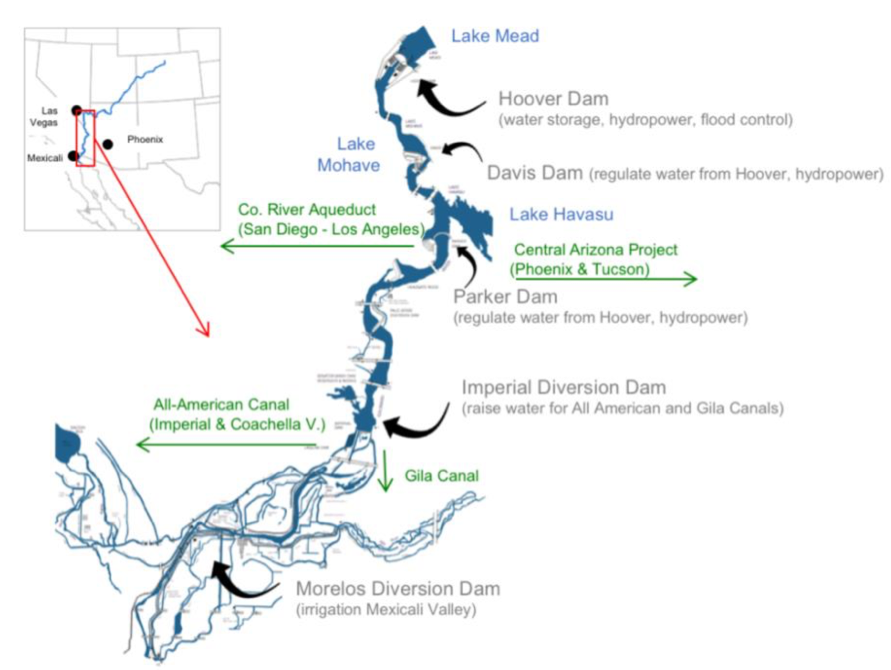 California has over 1,300 reservoirs for storing surface water. LA Water and Power alone has 110 reservoirs. Imperial Reservoir, that conveys water through the All-American Canal, Lake Mohave and Lake Havasu are all downstream from Lake Mead and are full, demonstrating that Lake Mead alone is NOT an accurate indication of available water for California in any given year. Metropolitan Water District (MWD) funded Parker Dam at Lake Havasu but it is “officially” owned and operated by the USBR. Water conveyed by MWD’s Colorado River Aqueduct is drawn from Lake Havasu and powered by Parker Dam, not by Hoover Dam and Lake Mead. This is an illuminating map of reservoirs along the Colorado River downstream from Lake Mead. (Water Resistance Portfolio, Jan 2020, CA Dept. of Water Resources)
California has over 1,300 reservoirs for storing surface water. LA Water and Power alone has 110 reservoirs. Imperial Reservoir, that conveys water through the All-American Canal, Lake Mohave and Lake Havasu are all downstream from Lake Mead and are full, demonstrating that Lake Mead alone is NOT an accurate indication of available water for California in any given year. Metropolitan Water District (MWD) funded Parker Dam at Lake Havasu but it is “officially” owned and operated by the USBR. Water conveyed by MWD’s Colorado River Aqueduct is drawn from Lake Havasu and powered by Parker Dam, not by Hoover Dam and Lake Mead. This is an illuminating map of reservoirs along the Colorado River downstream from Lake Mead. (Water Resistance Portfolio, Jan 2020, CA Dept. of Water Resources)
Imperial Reservoir, that conveys water through the All-American Canal, Lake Mohave and Lake Havasu are all downstream from Lake Mead and are full, demonstrating that Lake Mead alone is NOT an accurate indication of available water for California in any given year.
A drought safety net has not been reported by California’s MWD yet, but certainly exists. It has been planning for drought, banking and trading water for years as a giant wholesaler. MWD ‘s water sources, in addition to Lake Havasu, include large amounts of water purchased from the Central Arizona Project, Imperial Irrigation District, the State Water Project, The Los Angeles Aqueduct, tribes with senior water rights, farmers willing to fallow their land, conservation projects that transform into Lake Mead interim credits and recycled water from its treatment facilities. MWD has supplied half of LA’s water in recent years, which is part of the reason it is funding the controversial Delta Conveyance Project to divert more water from the north to southern cities (LA Times, May 26, 2021). MWD owns a vast amount of land, including 20,000 acres of Bay-Delta Estuary wetlands that it purchased in July 2016 as well as farmland in the Imperial Valley.
MWD’s website reports owning 3 major reservoirs and 6 minor reservoirs, but there are many more depicted in other reports. It has a vast infrastructure and powerful financial and political influence, enough to fund the construction and operation of numerous dams “owned” by other water agencies and conveyance systems. For example, its reserves at Lake Mathews, Lake Perris, Diamond Lake, Lake Skinner are all at least 61 to 65 percent full at the end of summer this year. Gene Wash Reservoir and Copper Basin Reservoirs, each about 2 miles west of Parker Dam at full Lake Havasu, are relatively unknown to the public.
As part of the Colorado River Compact, USBR insisted that California divide up its 4.4 MAF allocation into the following priorities:
- Agricultural Contractors in this order: Palo Verde Irrigation District, Yuma Project of the Bureau of Reclamation, Imperial Irrigation District, and Coachella Valley Water District for a combined total of 3.85 MAF per year
- Metropolitan Water District for 550,000 MAF
- San Diego Water Authority allocation was transferred to MWD after WW II.
- Agricultural users for any surplus.
MWD has an astounding amount of control over most water resources in California, Arizona and Nevada for more than 25 years. MWD has formed long-term contracts to purchase water from every water district in three states, barring none, that receive Colorado River water. The MWD resources manager, Bill Hasencamp, said MWD expects to “still have an estimated 1 million acre-feet of reserves at the end of this year” (California Drought 2022, Aug 7, 2022, www.Desertsun.com). It funds the construction of water infrastructure, buys water rights, and pays farmers for fallowing acreage and conservations efforts everywhere, amounting to billions of dollars annually. (Imperial Irrigation District, AZ Municipal Water Association, Southern NV Water Authority.) As wholesalers with direct, senior Colorado River rights, MWD and IID took their full share of Lake Mead allocations, meanwhile cutting back on water distribution to users lower in the water rights hierarchy for 2022.
MWD also entered into agreements with SNWA for water rights to the Virgin and Muddy Rivers and storing water in the underground aquifers of AZ. Both MWD and SNWA will take Arizona’s Colorado River reductions in the event of federal curtailments in drought years and Az will pump from its underground reservoirs instead. Arizona also agreed to allow California to take its full 4.4 MAF allotment in shortage years, before any water is delivered to its CAP as part of a US Supreme Court litigation settlement in 1968 regarding Parker Dam and Lake Havasu. MWD is also working on a multi-billion-dollar recycling project with Arizona and Nevada to build a treatment facility in Carson, large enough to produce 150 million gallons a day of potable water. The project would further purify some of the treated 260 gallons/day that the LA Sanitation district discharges back into the ocean.
All southwestern states, as described above, have been planning and storing both surface and underground water for decades at the expense of falling water levels in Lake Mead. Underground aquifers are routinely replenished to prevent irreversible drying out and subsidence (land sinking). Surface and constructed reservoirs are more easily identified than underground water tables. However, since the Sustainable Groundwater Management Act of 2014 (SGMA), ground water levels and water quality are increasingly monitored closely. Forty to sixty percent of developed water used in California is from groundwater sources.
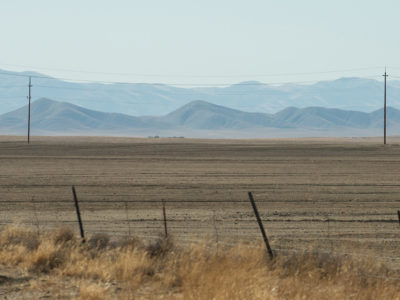 Agricultural and rural water users with wells rely on groundwater more when surface water becomes less available. Water districts pay farmers to conserve water by fallowing farmland, or buying water rights directly, which is then sold to urban residents and industries or saved in primary reservoirs, such as Lake Mead, by the wholesalers for credits. Funding in Arizona alone for paying off water users, who have junior rights compared to CA consumers and so take the brunt of Tier 1 USBR reductions, amounts to at least $130 million.
Agricultural and rural water users with wells rely on groundwater more when surface water becomes less available. Water districts pay farmers to conserve water by fallowing farmland, or buying water rights directly, which is then sold to urban residents and industries or saved in primary reservoirs, such as Lake Mead, by the wholesalers for credits. Funding in Arizona alone for paying off water users, who have junior rights compared to CA consumers and so take the brunt of Tier 1 USBR reductions, amounts to at least $130 million.
Therefore, consumers can expect significant increases in their water bill rates to cover the cost of purchasing water and lower delivered amounts, even if more water remains in Lake Mead.
Alternative Water Sources in Arizona and Nevada
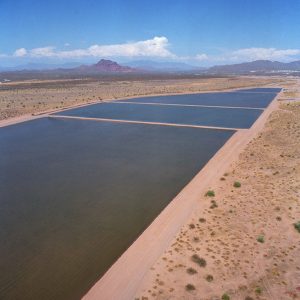 An example of municipal water districts storing water underground is AMWUA, a non-profit association of 10 municipalities in populous Maricopa County, Az. AMWUA reports that they have enough stored water to meet all urban needs for over two years, in spite of the August 16, 2022 reduction by 21% of water from Lake Mead. The source of their stored water is largely from Lake Mead. The Granite Reef Underground Storage Project is a recharge facility that covers 217 acres and stores 93,000 AF annually. AMWUA members and USBR are also reaching out to tribal groups with senior rights to purchase water.
An example of municipal water districts storing water underground is AMWUA, a non-profit association of 10 municipalities in populous Maricopa County, Az. AMWUA reports that they have enough stored water to meet all urban needs for over two years, in spite of the August 16, 2022 reduction by 21% of water from Lake Mead. The source of their stored water is largely from Lake Mead. The Granite Reef Underground Storage Project is a recharge facility that covers 217 acres and stores 93,000 AF annually. AMWUA members and USBR are also reaching out to tribal groups with senior rights to purchase water.
New USBR regulations in 1994 allowed interstate leasing of Colorado River rights. In 1996, Arizona created a Water Banking Authority, (AWBA), through which water could be purchased or sold. The AWBA began storing Colorado River water in underground aquifers with plans for future sales. By 2001 there was a three-state water deal with CA and NV. If SNWA withdraws AZ water from Lake Mead at times of shortage, then AZ can withdraw SNWA’s water from its aquifers. This was considered landmark interstate cooperation. However, they are not allowed to transfer water between upper and lower basins.
Southern Nevada Water Authority (SNWA), too, has reported a similar safety net of stored water. SNWA has four water treatment facilities, storing treated water for recycling in large underground aquifers, Lake Mead, and man-made Las Vegas Lake. Treated water and captured stormwater is transported back and forth along the Las Vegas Wash via Lake Las Vegas to Lake Mead. They receive credits for water recycled or unused from Lake Mead, thereby actually drawing out far more than the 240,000 AF claimed to be used annually. And SNWA was able to obtain new water from the Virgin River in the 2007 Interim Guidelines agreement that had not previously been allocated, even though it is drawn from Lake Mead based on Intentionally Created Surpluses. Most casinos have their own wastewater treatment systems beneath their hotels, allowing for recycling. SNWA benefits from a groundwater storge deal with Arizona. This is how Las Vegas supports 50 golf courses and resort lakes. This translates to a confusing picture of how low levels in Lake Mead effects the Las Vegas region and why SNWA claims to be very well prepared for drought. Las Vegas Lake is replenished from Lake Mead and is the single largest customer of the water district.
Summary
Drought is only one of multiple decisive and far-reaching components impacting the falling water levels of Lake Mead. There are many other sources of water in addition to Lake Mead that are poorly divulged to the public. The following are important elements that contribute to Lake Mead’s low water level but are not well known or understood.
- Water from Lake Mead has been over-subscribed since the Colorado Compact in 1922, also known as the Law of the River. The assumed average annual river flows filling Lake Mead were substantially greater than the actual flow amounts.
- Federal USBR and Interior Department curtailments for the Lower Colorado Basin States of AZ, NV, CA and Mexico is based on Lake Mead alone, regardless of higher water levels stored elsewhere. This is a gross over simplification of the many water resources in the Southwest.
- Water experts have predicted drought for decades, along with increased demand by growing urban population centers. Water agencies have spent billions of dollars constructing a vast infrastructure for storing and conveying water.
- There are far more sources of water on tap presently than is publicized, although in plain sight on the internet for those interested enough to search out the information.
- As water levels in the Colorado River dams began to fall, federal and state statutes allowed the marketing of water for sale and trade, interstate transfers, plus banking of water for Lake Mead credits in the future. This created water as a highly valuable commodity, rather than a natural public resource with equal access for all. Water marketing is big business, in which expenses are eventually added to everyone’s water bills.
- Water resources are managed on a state regional and interstate basis, supported by federal agreements for interstate storage, trading, marketing and banking with ICS credits. One major reservoir is only a fraction of the total reserves available to each state.
- Water wholesalers in the three states continued to take most of their allocations, storing unused water in surface and underground reservoirs, regardless of Lake Mead approaching dead pool status and severe environmental decline in the watersheds.
- Because of long-term planning for drought periods, the lower basin states all have sufficient water reserves to last for at least two years. Thus, there is no real water shortage justifying severe curtailments in 2022-2023. Lack of imminent shortage, however, does not dismiss the great need for more equitable management, conservation, efficiency and better care of the environment. Hopefully, the illusionary shortage will alert the public to water management problems and not take water for granted.
- To some extent, all urban, industrial, and agricultural users have exploited the supply of natural and developed water beyond sustainable levels in a semi-arid climate. Diverting more water from northern regions to drier southern regions is no longer working out well in many ways nor is a full solution to the current water problems. Everyone will feel the past century consequences of mismanagement. The shuffle and hide game must stop and be replaced with sound scientific and moral methods.
- Farmers are selling water rights on millions of acres to wholesalers, which is going to change the entire landscape of food production and way of life for many people. Water is becoming increasingly expensive for urbanites and less available in rural regions as wells go dry without irrigation in desert climates. Entire communities, agricultural industries and jobs will be affected by the re-purposing of farmland, not just individual farmers. Air quality is at risk too. Careful planning is essential to avoid vast negative consequences.
- Even though the largest water districts have multiple sources of water, including untapped potentials for recycling, stormwater capture and massive storage enough to last for two years, severe water restrictions are politically explained, insufficiently, by drought, climate change and a single reservoir’s water levels at Lake Mead.
- Little main stream media attention is given to the over use and mismanagement of natural resources. Better care of our soils and forests and technology for free energy could have a huge impact for providing more water, better air quality, more nutritious foods, more wildlife habitat and recreational opportunities.
- The rich water wholesalers, such as MWD, SNWA and AMWUA appear to have hand in glove relationships with federal and state government departments, with enough money to fund the construction of dams, aqueducts, tunnels and treatment facilities. They wield powerful influence at interstate levels similar to an unelected government, and are connected through a labyrinth of legal, political and financial ties. Follow the money to understand motivations and political control.
Everyone would be wise to pay attention and seek information about water. Knowledge is power.
Tomorrow we will release an interview with Elaine to discuss her research and articles.
Disclaimer: We at Prepare for Change (PFC) bring you information that is not offered by the mainstream news, and therefore may seem controversial. The opinions, views, statements, and/or information we present are not necessarily promoted, endorsed, espoused, or agreed to by Prepare for Change, its leadership Council, members, those who work with PFC, or those who read its content. However, they are hopefully provocative. Please use discernment! Use logical thinking, your own intuition and your own connection with Source, Spirit and Natural Laws to help you determine what is true and what is not. By sharing information and seeding dialogue, it is our goal to raise consciousness and awareness of higher truths to free us from enslavement of the matrix in this material realm.
 EN
EN FR
FR

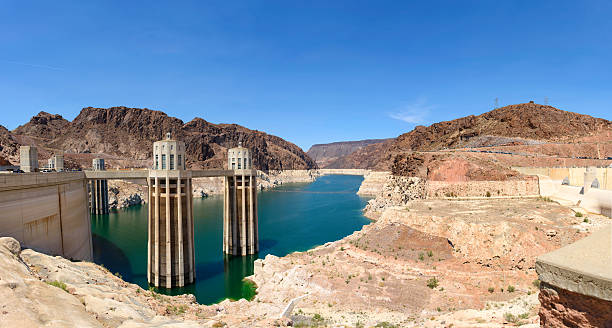












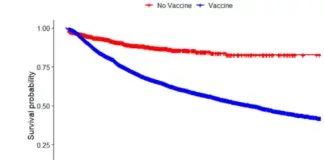












It's all BS. The assholes drained the lake sending it to the sea so they could starve the people of water. Seriously evil people are trying to subvert humanity. However, they know they've lost and have no chance, but doesn't stop them from trying. Nice to see them hang.